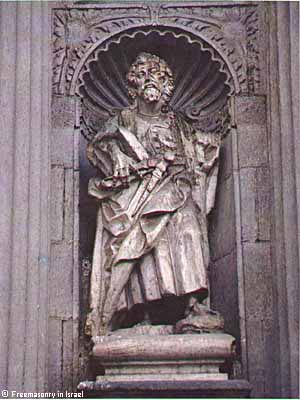Seven years of time was not the sole investment Solomon made for the construction of the Holy Temple but also it took expensive materials and the vast amount of labour force. Nonetheless, it is said that ‘Solomon spared no expense for the building’s creation. He ordered vast quantities of cedar wood from King Hiram of Tyre (1 Kings 5:20-25), had huge blocks of the choicest stone quarried, and commanded that the building’s foundation be laid with hewn stone. To complete the massive project, he imposed forced labor on all his subjects, drafting people for work shifts that sometimes lasted a month at a time. Some 3,300 officials were appointed to oversee the Temple’s erection (1 Kings 5:27-30). Solomon assumed such heavy debts in building the Temple that he is forced to pay off King Hiram by handing over twenty towns in the Galilee (1 Kings 9:11)’ (http://www.jewishvirtuallibrary.org/jsource/Judaism/The_Temple.html).
However, 1 Kings continues to describe that ‘Hiram was not happy with’ the towns he was given ‘and complained to Solomon that they were worthless (9:12-13)’ (http://www.biblicalstudies.org.uk/article_tyre.html) whilst Solomon was not an incompetent ruler who could balance his financial problems by only selling off some parts of his territory. Furthermore, Hiram was one of the most important allies for Solomon and his kingdom ever since his father’s reign. Now, it would be appropriate to take a glance at King Hiram and the background history of Tyre, his kingdom.
 |
| King Hiram |
According to the web site referenced above, ‘The city of Tyre was located on two islands 600-700m from the mainland and 40 km south of Sidon… and we have evidence that she was inhabited from early in the 3rd millennium BC. The first written reference appears in an Egyptian Execration text dating from c. 1780-1750 BC [Katzenstein & Edwards, 1992]. The book of Joshua refers to Tyre a “the fortified city” (19:29), an apt description of a fortress with strong walls ascending from the very edge of the sea… The island had two ports, one on the North side, the other on the South, but lacked agricultural land, an adequate supply of fresh water, fuel and room for burials [Liverani, 1988: 932]. The city’s population is estimated to have been about 30 000 in its heyday [Katzenstein & Edwards, 1992]. To support these inhabitants water and food had to be ferried to the island from the mainland city which contained large freshwater springs [Pritchard, 1955: 477]… The city grew rich through its extensive trade in timber with Egypt and in turn relied on Pharoah’s protection… as Egyptian power declined during the 12th Century BC… Tyre fell victim to the invasion of the Sea Peoples’ (ibid).
No comments:
Post a Comment